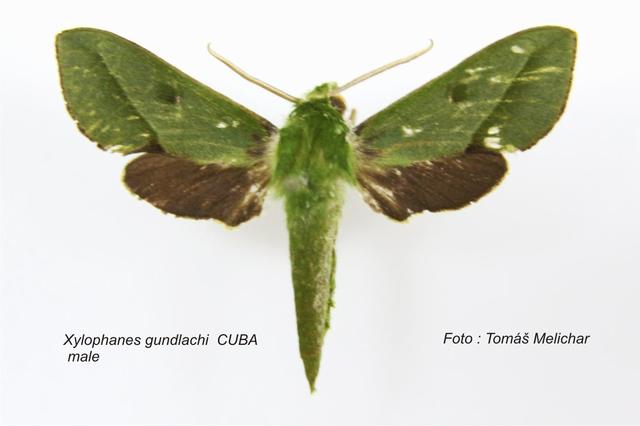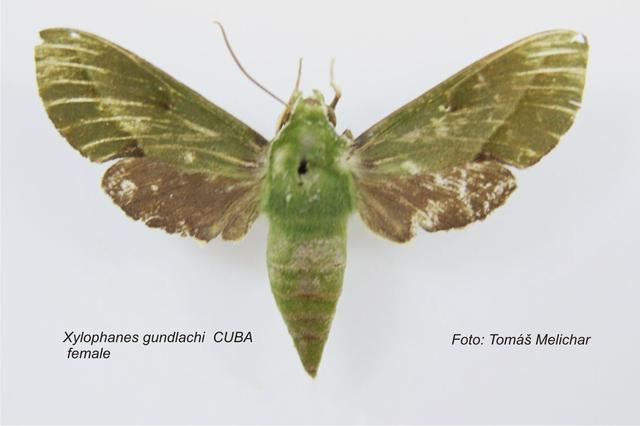Xylophanes gundlachii
Xylophanes gundlachii
(Herrich-Schaffer, 1863)

Xylophanes gundlachi male, Cuba, courtesy of Tomas Melichar.
This site has been created by
Bill Oehlke at oehlkew@islandtelecom.com
Comments, suggestions and/or additional information are welcomed by Bill.
TAXONOMY:
Family: Sphingidae, Latreille, 1802
Subfamily: Macroglossinae, Harris, 1839
Tribe: Macroglossini, Harris, 1839
Genus: Xylophanes Hubner [1819] ...........
Species: gundlachii (Herrich-Schaffer, 1863)
|
MIDI MUSIC
.....It's a Wonderful World.....
copyright C. Odenkirk
ON.OFF
<bgsound src="world.mid" LOOP=FOREVER>
|
DISTRIBUTION:
Xylophanes gundlachii moths
fly in Cuba (specimen type locality).
"Most similar to Xylophanes irrorata but upperside of body and forewings deep green rather than pinkish-brown, and hindwings uniform dark brown.
Forewing upperside with a dark green postmedian line, with a pale proximal border, that ends on the inner margin in a brown spot; discal spot small, black,
with a white centre; costal edge and fringe reddish, the fringe more brown posteriorly and with very few white scales.
Basal three-fifths brown, as hindwing upperside.
Brown; fringe pale, not distinctly spotted." CATE
FLIGHT TIMES:
Xylophanes gundlachii adults fly????
ECLOSION:
Pupae probably wiggle to surface from subterranean chambers just prior to eclosion.

Xylophanes gundlachi female, Cuba, courtesy of Tomas Melichar.
SCENTING AND MATING:Females call in the males with a pheromone released from a gland at the tip of the
abdomen. Males come in to lights very readily, but females are seldom taken in that way.
EGGS, LARVAE, PUPAE:
Larvae probably feed on
plants in the Rubiaceae family and Malvaceae families.
Moths emerge approximately one-two months after larvae pupate.

Use your browser "Back" button to return to the previous page.
Goto Main Sphingidae Index
Goto Macroglossini Tribe
Goto Central American Indices
Goto Carribean Islands
Goto South American Indices
Goto U.S.A. tables


